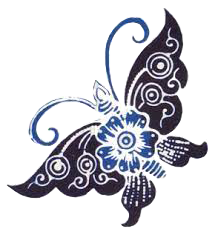Why is Batik in Indonesia Different? This is the reason!
Batik is a typical Indonesian cloth whose manufacture is specifically done by writing or applying wax (a type of solid substance such as ink) by forming a certain pattern.
Etymologically, the term "batik" comes from the Javanese Sanskrit language, namely "ambathik" which is taken from the word "amba" which means "wide" and "nithik" or "make a point". That way you could say "batik" can be interpreted as connecting the dots into a certain image on a broad or wide batik cloth.
In making batik coloring patterns have been known since the Majapahit era and became very popular in the late 18th or 19th century. While the batik produced was all in the form of written batik until the early 20th century.
Entering World War I or around the 1920s, batik with a new stamp began to be known by the people of the archipelago. Although it is recorded that batik was present during the Majapahit kingdom, Dutch researcher G.P Rouffaer argues that batik techniques in Indonesia were introduced from India or Sri Lanka in the 6th or 7th century.
Then, why are the patterns in batik in each region different? Here's why:
Forms of Cultural Diversity in Indonesia
We all know that Indonesia has various tribes, races and religions spread from Sabang to Merauke. Likewise with batik, the different patterns from various regions can be evidence of the cultural diversity that exists in Indonesia.
As a Symbolic Meaning
From the various different batik patterns, it can also be seen where the batik is made from. That way, if there are visits by state officials, regional officials to important people to an area in Indonesia, batik can be used as a gift or a symbol of the place visited.
Proof that Batik Craftsmen Have High Creativity and Innovation
Different batik patterns can also show that batik craftsmen have high creativity and innovation. Thus, the patterns presented by batik craftsmen in Indonesia are diverse, such as the people who inhabit the country.
Showing Community Life in Indonesia
Each region in Indonesia has a different natural, social and level of prosperity structure. And usually the batik craftsmen describe the conditions in their area with batik patterns, resulting in different patterns between batik in one area to another.
For your information, Indonesia has several batik fabrics that have been known to foreign countries, the batik comes from Solo, Pekalongan, Yogyakarta, Lasem, Blitar, Tegal, Cirebon, Jepara, Klaten, Papua, Bali, Kalimantan, Sumatra, Cianjur, and almost all islands in Indonesia.
Well, those are the reasons why the patterns on batik in Indonesia are different. In your opinion, what else makes batik patterns in Indonesia different? Give your reasons in the comments column, okay?

